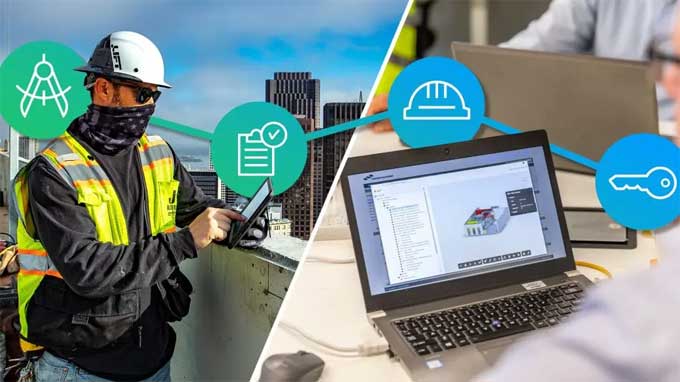
Ensuring the Success of Your Project using Connected Construction

The field of construction and architecture is developing each day at a vast speed; many advancements have been made possible by revolutionary and innovative new ways of managing the construction of a project. With the Building Information Modelling (BIM) program being widely available, project managers and architects now have the perfect tool in their arsenal for optimally managing and finalizing any project, no matter the shape or scope.
Construction projects are inherently complex and involve multiple aspects and moving parts. A small mistake or oversight in one area can considerably affect the overall project.
To ensure efficient collaboration, communication, and data exchange, modern construction professionals need to make use of all available methods. This is the stage where "Connected construction" comes to play.
What Is Connected Construction?
Connected construction has a different meaning to different people, but it always has one common element. Connected construction is a foundation for open communication by using technology to integrate various teams, technologies, and information involved in a construction project.
By integrating connected construction in a project, we can be sure that there is no space for any kind of miscommunication, and thus no data is lost at any given time. When the teams stay updated and have all the necessary information about the project, there will be a very slim chance of any mistakes.
Advantages of Connected Construction
There are a lot of benefits that can be achieved if connected construction is adopted, some of the benefits are listed below:
1. Data-Based Decision Making
Using connected construction gives you easy access to up-to-date information, which helps you make informed decisions regarding the project and minimize risk as a whole. Along with that, connected construction also allows for a better and faster response to unsought changes and situations.
2. Interoperability
Connected Construction reduces the risk by making the sharing of information automated and also eliminating the duplication of tasks. A central hub where all project-related data are accessible will result in achieving better productivity and systematic collaboration among teams.
3. Real-time information
During connected construction, all information is centralized - not spread across multiple platforms, documents, and hard drives. As changes are made, they become instantly visible to all parties involved.
This will provide accurate data and pertinent information and will give a seamless communication and collaboration experience across all workers and stakeholders. With connected construction, we can detect and prevent issues before the beginning of the actual construction.
4. Optimized Project Costs and Better Scheduling
Connected construction means that all team members and stakeholders are aware of the project requirements and goals. As a result, you can create accurate cost estimates and create optimal scheduling for the entire project.
In the end, the use of this methodology and mindset will save project managers a lot of money by reducing rework costs. Because of the risk mitigation capabilities of connected workflows, there is almost no need to rework after construction has begun.
5. Improved Collaboration and Communication
Connected Construction creates an efficient path for collaboration and communication. When different project teams work on the same platform, it makes for a seamless transition of information and prevents any delays.
The creation of connected workflows with software like Autodesk Construction Cloud allows architects, engineers, project managers, and other stakeholders to gain a comprehensive view of the entire project and collaborate more effectively. As a result, response times are greatly improved, and all teams are aware of the current project status.
To learn more, watch the following video tutorial.
Video Source: Autodesk Construction Cloud
Conclusion
A connected construction project is nothing short of revolutionary for the world of architecture and construction. The seamless data exchange and connected workflow make it possible to complete more tasks faster.
It is safe to say that connected construction is the future of the AEC industry. A successful construction project requires everyone to work together and stay on the same page about progress, issues, and changes. The use of connected construction can help in achieving considerably lower risk.

Image Courtesy: constructionblog.autodesk.com

